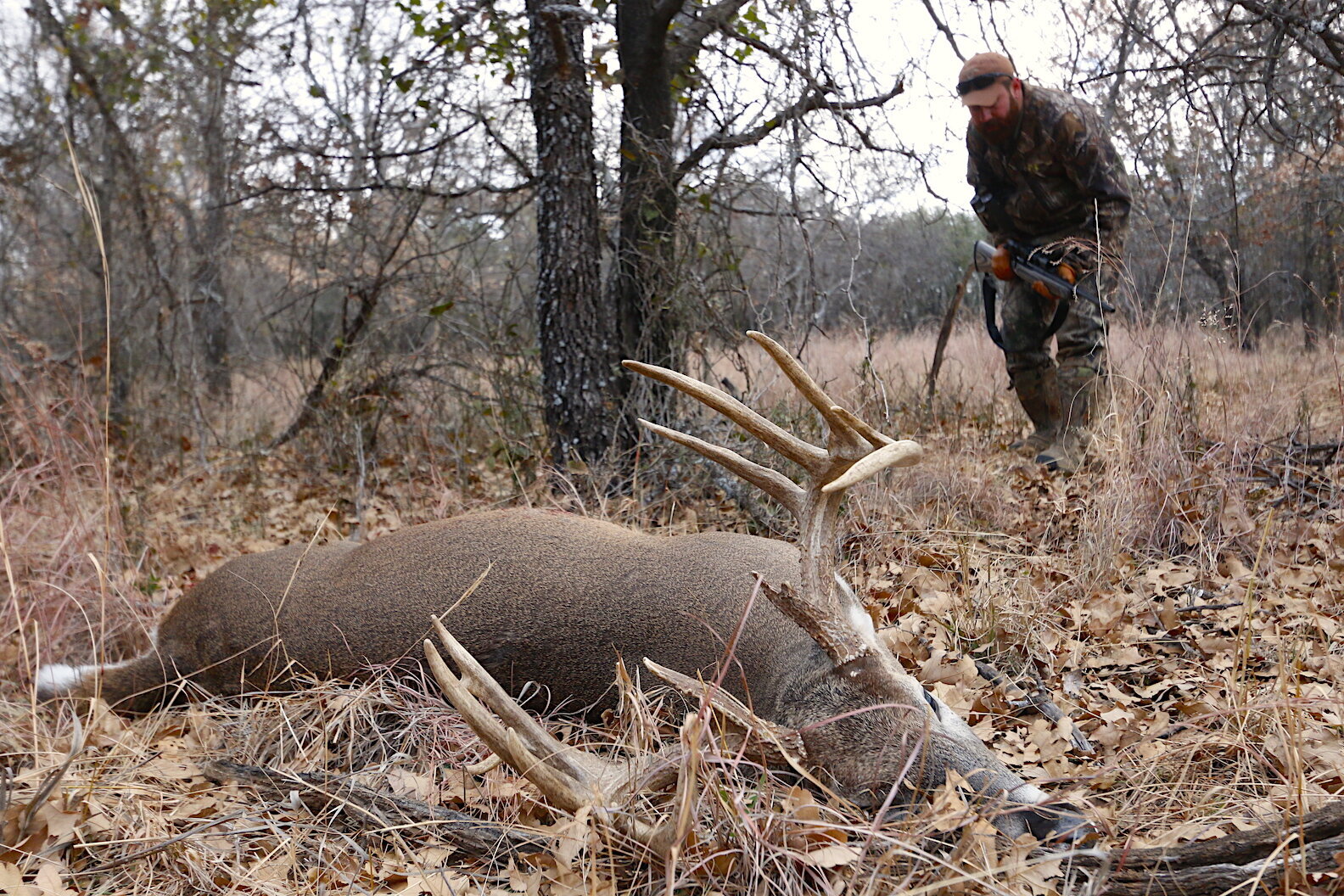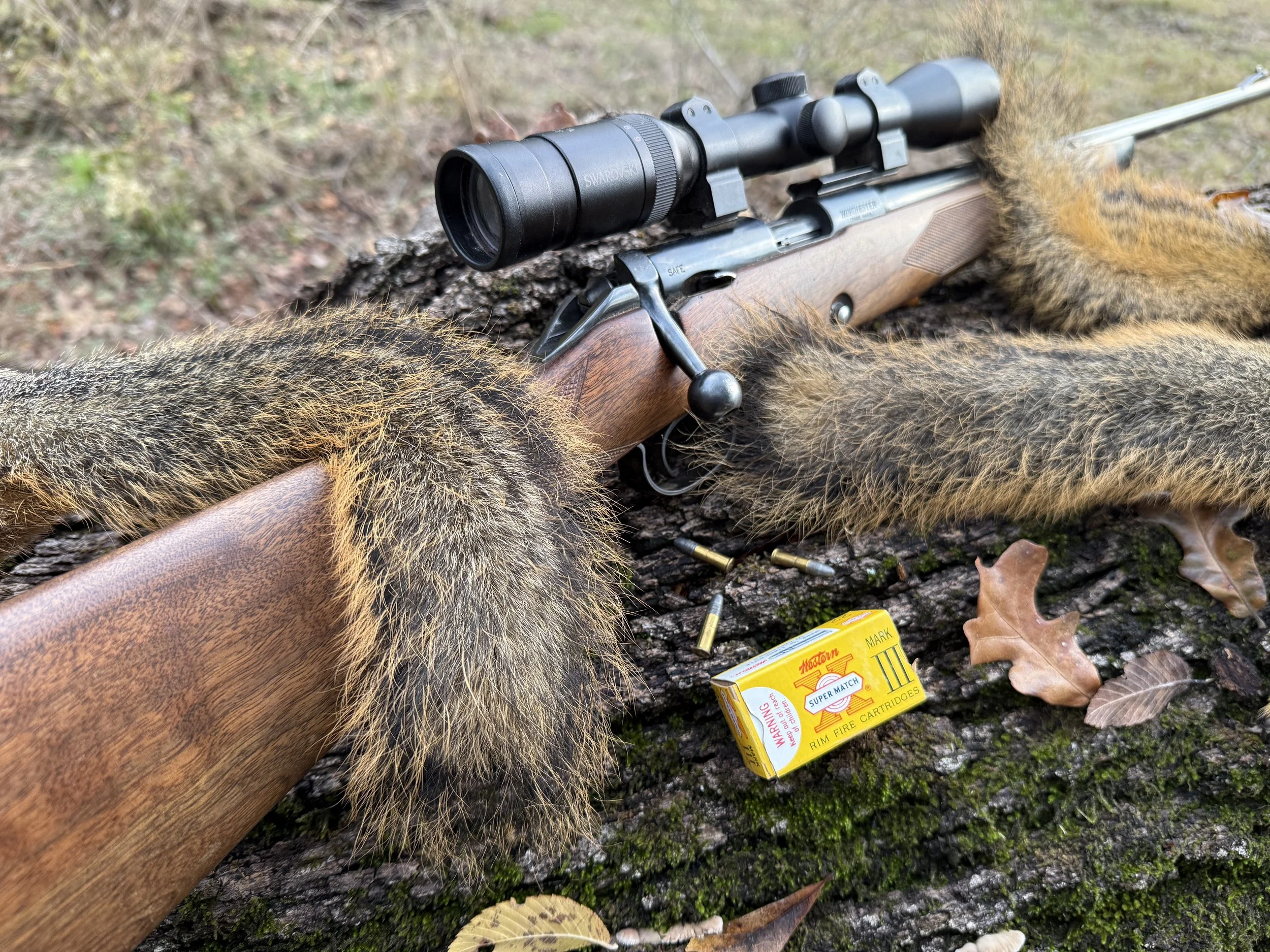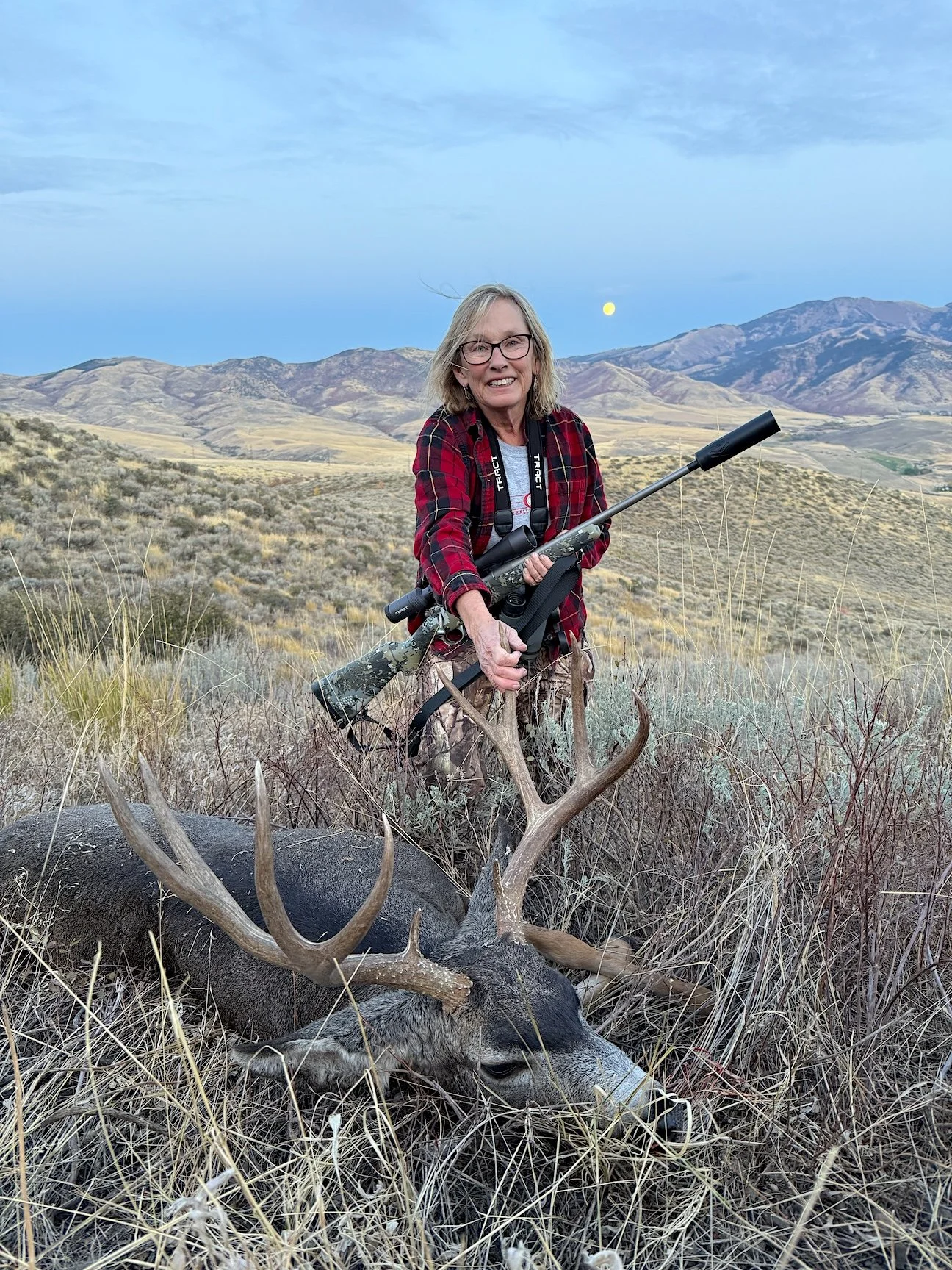No Bang Flop Bullet
A reader recently asked what bullet he could shoot in his 6.5 Creedmoor that would provide a bang-flop response on deer hit at close range in heavy cover.
Bang flop. Dead right there. What hunter doesn't want this result to every shot? But is there a cartridge/bullet that can do it every time?
Dear Ron,
What bullet would you recommend for close range? I’m shooting 6.5 Creedmoor in thick timber. Even if I get a good blood trail, deer notoriously lay up in thick brush. Looking for a bang flop at 20 to 50 yards.
ADAM
I can appreciate this hunter's wish. He is not alone. Most of us are looking for that magic formula, the cartridge/bullet combination that will kill instantly, every time.
The only problem is... It doesn't exist.
Here are eight different bullet options atop 6.5 Creedmoor cartridges. All are proven game getters, but none is guaranteed to produce a bang flop reaction to all deer struck inside of 50 yards -- or even 50 feet.
Bang Flop Covered Too Often?
As a hunting and gun writer, I address this topic often. So often that I sometimes think I'm overdoing it. But requests for the super bullet keep coming, so I keep writing. Forgive me if you're sick of reading about this but maybe you can contribute something new. Sound off. Meantime I reiterate once again, there is no hand- or shoulder-fired cartridge, caliber, or bullet that can guarantee an immediate incapacitation of deer/elk sized game -- unless...
Might a larger cartridge throwing bigger bullets guarantee the desired bang flop response? No. The odds increase, but deer have shown a remarkable ability to absorb massive kinetic energy from bullets and run for several seconds before expiring. L. to R. are 375 H&H, 416 Rem. Mag., and 458 Win. Mag. with 300- to 500-grain bullets.
Unless said projectile is applied to the central nervous system. At which point minimal bullet diameter, mass, or kinetic energy are required. A 40-grain solid from a 22 Long Rifle rimfire cartridge (less than 150 foot-pounds of muzzle energy) penetrating the brain or spinal column of an elk, moose, or giant brown bear will drop it as if God pulled its plug.
At the opposite end of the spectrum... I once applied about 3,100 foot-pounds of energy to the chest of a 220-pound whitetail via a 300 Winchester Magnum -- and watched it run as if I'd merely slapped it with a catcher's mitt.
Full Use of Energy for Bang Flop Guarantee?
And if you're thinking said 300 Win. Mag. bullet just zipped through the deer like a hot target arrow through a stick of room temperature butter, no sir. That 150-grain bullet stayed inside the body, which many hunters insist is the absolute guaranteed way to ensure maximum impact, maximum performance. Expend all of that massive energy inside a 220-pound deer and it's bang flop for sure. DRT -- dead right there. And all the rest of the jargon and acronyms for instant demise.
I don't want to glorify the "kill shot," but I've included this impact photo to dramatize my point. As you can see, the bullet has just hit this buck with a 150-grain bullet carrying roughly 3,000 f-p of energy. Shot was from about 30 yards, placed tight behind the shoulder, mid-height, broadside. Notice the buck is stumbling onto its chin, but has not been knocked sideways let alone bowled over. Instead of falling dead right there, it dashed off about 100 yards before expiring from blood loss. Bullets do not kill by blunt force trauma unless they impact the central nervous system.
Except it wasn't. That buck just kept running until the second dose of 3,100 f-p energy landed and also stayed inside. And it still kept running. A third 150-grain bullet was required to finish the job, this one zipping right through both shoulders. It still didn't knock the deer over, but caused enough hemorrhaging that the animal soon expired.
It's Not Just Deer
Freak incident? I don't think so. I've seen coyotes take a 270 Winchester 130-grain to the chest from 30 yards and dash off as if touched by an electric prod. That particular coyote only made it 25 yards or so before its blood pressure dropped too much to maintain brain control. But another hit in the chest with a 180-grain bullet from a 300 Winchester Magnum (again) turned and fled at least 30 yards before expiring. No bang flop.
Are we starting to see a pattern here? (I mean apart from these same anecdotes I've written up before.) The pattern is that game shot through the old "boiler room," as we called it in mid-20th century, usually stands, walks, or runs for several seconds until blood pressure drops. They die from hemorrhaging. Not from blunt force trauma.
Don't Shoot the Piano Player
At this juncture I know many hunters are ready to jump down my throat because every deer they've ever shot with their 35 Remington or 338 Winchester Magnum or 50 BMG fell bang flop dead right there. Every. Single. One.
I am happy for them. For you, if you are one of them. But I will not stake my life on that particular rifle/cartridge/bullet producing a bang flop the next time because... our quarry's physiological response is too variable. The heart and lungs, while essential for fueling the brain, are not vital to bodily function in the short term. Very short term, but long enough for an animal thus struck to cover a lot of ground. And, sometimes, hemorrhaging is minimal enough that said animal escapes and lives to tell about it, just as some escape rips and tears and bites from lions, wolves, eagles and other predators. Death in Nature is seldom quick and neat, but responsible hunters try our best to make it so.
This is the buck shown taking bullet impact in the earlier photo. Blood around the mouth indicates significant hemorrhaging in the lungs. This is classic response to a heart/lung shot. The elasticity of the animal's tissues enables it to absorb the energy. Most of the terminal damage is done by physical contact between the bullet and vital organs. Bang flop responses are almost always due to central nervous system hits.
Unexpected Bang Flops
I should admit that I, too, have enjoyed some dramatic, if unexpected, bang flop results. With central nervous system strikes, of course. But also with pure chest hits. I haven't enjoyed many of these, but a few.
My first pure chest-hit bang flop was a running whitetail doe struck just behind the shoulder with a puny 75-grain, .243" hollow point coyote bullet fired from my old Remington M788 chambered 6mm Rem. DRT. This almost predated Moses and the parting of the Red Sea. 1972.
Another I recall was a female pronghorn. The bullet was a 60-grain cup-and-core from a 22-250 Rem. fired from a Ruger M77. This proved to be a Lazarus doe. After she collapsed, the herd looked about quizzically, then resumed browsing. I sat quietly, hoping they'd calmly walk off. Before they could, my dead doe jumped up and joined them. I had to administer another chest shot, this one broadside. Necropsy revealed the first bullet had not entered the chest, but unloaded its energy near enough the spine to knock her out. So I guess this one doesn't count.
More recently a Stone's ram took a 165-grain Scirocco through both shoulders, in and out, from a 300 WSM 400 yards away. It fell right over. If you're thinking massive "hydroshock" was in play, know that at 400 yards this bullet was only going about 2,350 fps. This is 30-30 Win. velocity at about 50 yards. I haven't heard many hunters extolling the hydroshocking properties of the 30-30.
One 165-grain .308 Scirocco through both shoulders put this wilderness ram down right where it stood, but I don't think hydroshock was at play. The fall was not that dramatic. I suspect the ram fell over and expired from hemorrhaging, which is usually what happens. Rifle is the Kiraru Rambling Rifle in 300 WSM. No longer made. It weighed a few ounces over 5 pounds. The 10-ounce Leupold 2-7x33mm compact scope kept weight down, too. Felt recoil was surprisingly minimal and accuracy was MOA. That handsome young man with me is outfitter Bryan Martin, now running Asian Mountain Outfitters. He's trying to get me to hunt Argali rams in Dangerstan. I'm resisting.
Hydroshock Bang Flop Rare
Now that I think about it, my "hydroshock" bang flops have been few and far between. Most, on close examination, proved to be spine or near spine hits coupled with significant hemorrhaging. The shock near the spine put them down, the blood loss finished them. Even when using the famously shocking 257 Weatherby, 270 Weatherby, and 300 Weatherby Magnums my non-central-nervous-system instant kills have been rare. I can recall a couple of chest-shot whitetails with the 257 Wby. Given my five decades of hunting adventures, I'm sure there were more. I just can't recall them.
The 257 Weatherby Magnum pushes 110-grain bullets as fast as 3,450 fps. It has a reputation as a bang flop producer due to the hypothetical phenomenon of hydrostatic or hydrodynamic shock.
On and On and ...
I could drone on like this and so could most of you. The point is none of us and none of our rifles, cartridges, or bullets can guarantee a bang flop response from much of anything larger than, say, a prairie dog.
So we should give up the search for this particular grail. It's no more real than the Holy Grail of Arthurian myth. Instead we should perfect our bang flop shot placement. This would be a brain or spine hit from the withers forward. The safest place to attempt this is on the high shoulder, slightly forward of center. Brain shots are risky. A deer can flick its head in an instant, putting your perfectly aimed bullet in the jaw, nose, or meat of the neck.
With any central nervous system hit and immediate drop of your quarry, anticipate a Lazarus. Stay on the downed animal (with your sights and loaded rifle, not your boots or butt) for a minute or two. When you do approach, be alert, loaded, and ready to shoot. That doe pronghorn of mine had to have been lying there "dead" for five minutes before her resurrection. I once had a Dall ram wake up and depart while I moved around a rocky outcrop. I was lucky to finish it from 500 yards with a deadly accurate Remington M700 in 300 WSM from the Custom Shop.
Bang Track a Smarter Approach
Bang track is a smarter tactic than bang flop. Unless you're hunting where a fleeing but mortally wounded deer can escape into a no trespassing zone or some horribly inaccessible habitat, go for the big sure target, that 8- to 12-inch circle of lungs and heart in the chest. Then expect to track it. Most animals so struck expire inside of 100 yards. On rare occasions one might make it 200 yards. Anything farther is extremely unusual, most commonly the result of a fringe hit or poor terminal bullet performance (insufficient hemorrhaging.)
Learning to track game is a better use of your time than trying to find the mythical bang flop bullet. Most mortally wounded deer will run at least some distance before expiring.
Tracking is a basic hunting skill, an essential tool every hunter should master. Tracking is always easier with a good blood trail, and that is improved with bullets that expand reliably to 1.5X or more original diameter while punching through. Don't worry about energy wasted in the dirt on the far side. It's tissue destruction that matters.
Make these holes in the lower third of the chest and pooling blood is more likely to spill out for easy tracking. But even if the bullet stays inside, a heart/lung shot animal should fairly quickly begin bleeding from the nose and mouth. Yes, this is a bloody business, but it's Nature's idea. Predators have been attacking, wounding, and blood trailing prey for millions of years. We at least try to kill as quickly and cleanly as possible.
Ron Spomer has hunted whitetails and more than 100 other big game species with dozens of rifles, cartridges, and bullets for more than 50 years, long enough to discover that nothing can guarantee a bang flop.















